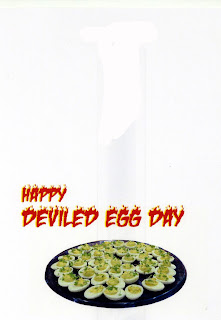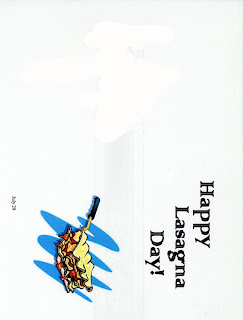
Amateur astronomer John Lowry Dobson, co-founder of the San Francisco Sidewalk Astronomers group is the inventor of a simple telescope mount design that is easy, inexpensive and
effective. The "Dob" as it has been affectionately known by amateur astronomers on a budget for over 50 years, is made up out of plywood, old phonograph records and an assortment of nuts and
bolts and felt strips. Because you save so much money on the mount (which tends to be rather expensive if you buy a professionally made one) you get to spend your money
on bigger mirrors and more powerful lenses. We're going to assume a 10-inch Newtonian reflector telescope. A 10-inch reflector has a 10-inch mirror. The actual tube will be more like 12 inches in diameter to accommodate the mirror mount. We'll give you the general instructions for building the scope itself in Part 2 of this series, but for now we'll start with the mount itself. If you already have bought the tube, you can use the tube to get the dimensions of the mount right.
We're going to assume some rudimentary carpentry skills. Be sure and double check measurements against the tube you will be using to insure it will fit in the cradle properly.

You'll need a bit more than a 4x4 sheet of plywood to build a 10 inch scope. This cutsheet diagram fails to account for the extra inch in the 18x13 front piece, so I just get a 4x8 sheet of plywood and cut the 18x13 piece out of the extra wood. You could use a 4x4 sheet of plywood for anything smaller than a ten inch scope - an 8 inch for instance would only need an 18x9 inch front. It's pretty easy to pair this design down or expand it to fit other size scopes.
This is what you'll need in the way of materials:
Materials
- Ten
inch Newtonian reflector telescope (12 inch outer diameter tube)
- 4 x 8
foot sheet of half inch plywood
- Two
unwanted phonograph records
- Felt
- Glue that will stick to vinyl and wood
- Saw
- Drill and bits
- Screws - 1 and 2 inch
- Wrench
- ½ inch by 3 inch carriage bolt, washer and nut (wing nut optional).
Building the Dobsonian Mount
 |
| There is a matching "ear" on the other side of the tilt box |
Step 1
To make the tilt box, cut out a pair of 12x12 inch plywood squares. Set these aside
Step 2
Cut out and two 12x13 inch
plywood squares.
Step 3
Fit the plywood squares together to form an open-ended box. Lightly nail it together to form a 12x12 inside diameter. Try fitting the tube of your telescope through the box. It should fit snugly.
Step 4
The 12x13 squares will overlap the ends of the 12x12 squares so that you have an
inside diameter of 12x12 inches. Don't try to miter the ends. Drill small holes in the overlap, glue and screw the 12x13 squares to the 12x12 squares so you have a sturdy open ended box.
Step 5
Cut two 6 inch diameter plywood circles for the “ears” of the mount. Sand
the edges smooth.
Step 6
Glue and screw the flat disks
to the center of opposite sides of the mounting box. Do not put screws all the way through the sides of the tilt box and leave the center of each ear clear for a mounting screw to be added later.
 |
| Side view of the rotating stage |
Step 7
Cut two 12 inch diameter circles out of plywood. These will form the rotating "stage" on which you will mount the upright support box.
Step 8
Drill a
half inch hole in the center of both disks. One will be the lower stage. You will need to drill a shallow ¾ inch recess hole in the hole in the lower stage to allow a slight recess for the carriage
bolt that will hold the lower stage to the base. The carriage bolt head will be fully recessed. The picture shows the head sticking up a bit to make the assembly easier to understand, but must be recessed fully or the stage will wobble when set on the ground.
Step 9
Insert the carriage bolt through the lower stage so that the head is recessed. Turn the stage over so the 3-inch carriage bolt sticks straight up.
Step 10
VERY CAREFULLY Drill half inch holes the centers of the
phonograph records.
Step 11
Glue the bottom of
one record, slide it over the lower stage bolt and press firmly against the lower
stage and let it dry.
Step 12
Match up the hole in the second record with the hole in the upper stage and glue it in place and let it set firmly.
Step 13
Flip the upper stage over so the record side is down and slide it over the bolt and down onto the lower stage so that the records rub together.
Step 14
Bolt the two stages together. I like to use a wing nut so I can adjust the tension in the field or disassemble the whole thing when transporting it. Adjust the tension on the nut so that the upper stage turns smoothly, but has some friction to keep the stage positioned once you have it where you want it.
 |
This is what the mount looks like
complete and attached to the stage |
Step 15
Cut two 26x12 inch rectangles out of your plywood. These two pieces will form the sides of the mounting pillar.
Step 16
Now cut an 18x13 inch rectangle to make the
front of the mounting pillar. The pillar will have three sides and be open on one side so the tube can be positioned to point directly overhead.
Step 17
At this point you are going to make the pillar. Use both glue and small screws to make the pillar for added strength. Predrill the screw holes so the wood doesn't split when you drive the screws in. Position the side pieces on their long edges and lay the
front piece so that it's bottom edge is even with the bottom edge
of the sides. Where the top will be, the sides will stick up 8 inches above the front piece. This allows the telescope to be pointed horizontally and even to be depressed slightly below 90° to catch near horizon objects if you're viewing from a height.
Step 18
Cut a semi-circle arc out of the top edge of the sides of the pillar mount as shown. This will form the cradle for the ears of the mounting box. A 6-1/8 inch circle should work nicely.
Step 19
Sand the cradle and glue a piece of felt to the inside edge of both circular cradles.
Step 20
Glue the pillar mounting box to the top of the upper stage of the base. Drill screws through the edges of the pillar mount int the stage. Be careful not to screw all the way through the upper stage or it will prevent the stage from rotating properly.
 |
This version with the tilt
box in place adds holes in the
sides and front to reduce weight |
Step 21
The mounting box is turned with the ears at the side. Glue felt around the edges of both ears. This provides the friction needed to hold the telescope in place.
Step 22
Set the ears of the mounting box into the
curved cradles in the upper sides of the pillar mount.
Step 23
You can paint or sand and varnish the mount as you like. You're pretty much done for now.
When the telescope is mounted in the Dob mount, it will be able to rotate and elevate from below the horizon to straight overhead. The Dob mount is a steady platform. When you have the telescope mounted, you'll need to spend some time adjusting the tension on the stage bolt and the friction between the cradle and the mounting box ears. If the telescope is balanced properly in the mounting box, adjusting the elevation should be a matter of a soft push to make is slide smoothly to the next position you desire. The Dob is all about balance.
Our next step will be to complete our telescope and mount it in the Dobsonian mount you've just constructed. Stay tuned for part 2.
References:
Sidewalk Astronomers: Building a Dobsonian Telescope
Homemade Astronomy: Larry Brown
Plans
For A Homemade Dobsonian Telescope
Scopemaking: Homemade Telescopes
The
Pickle Bucket Telescope
A Homemade Telescope
© 2013 by Tom King








































